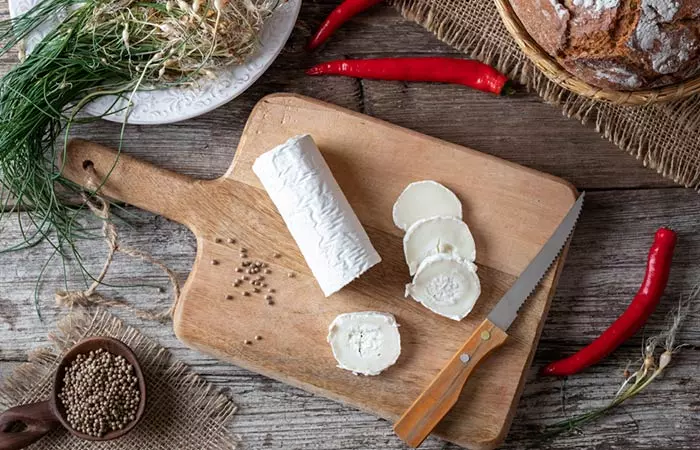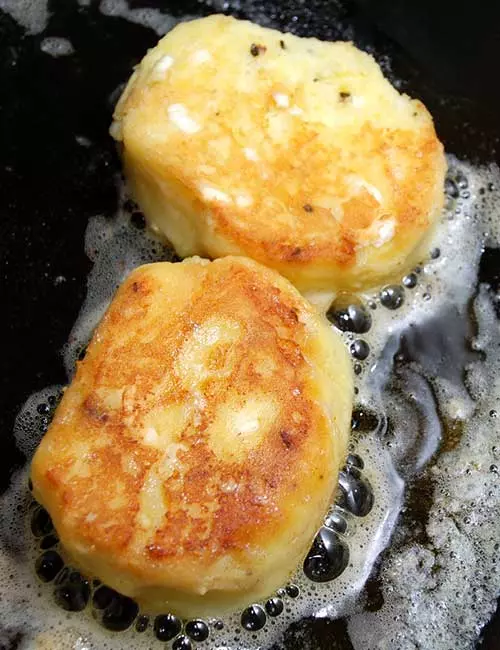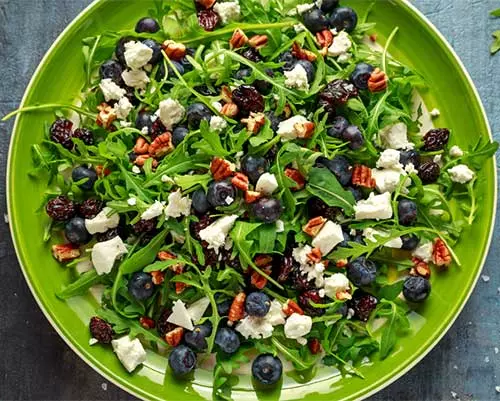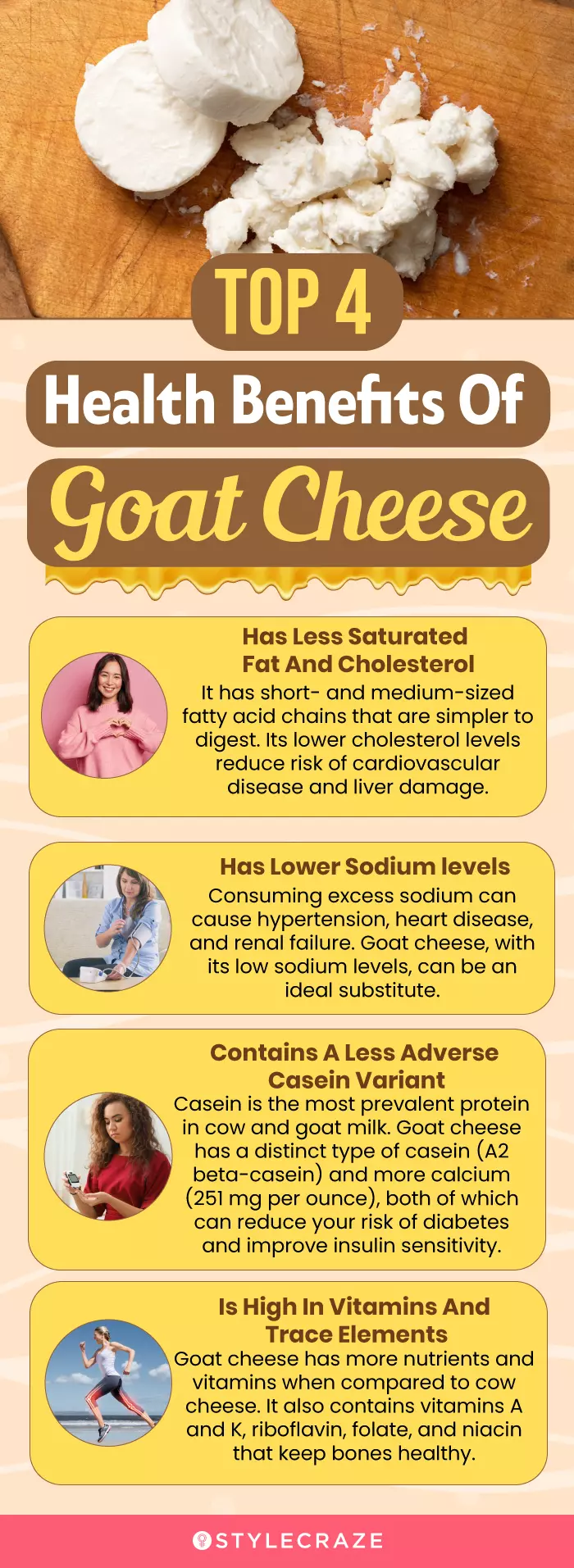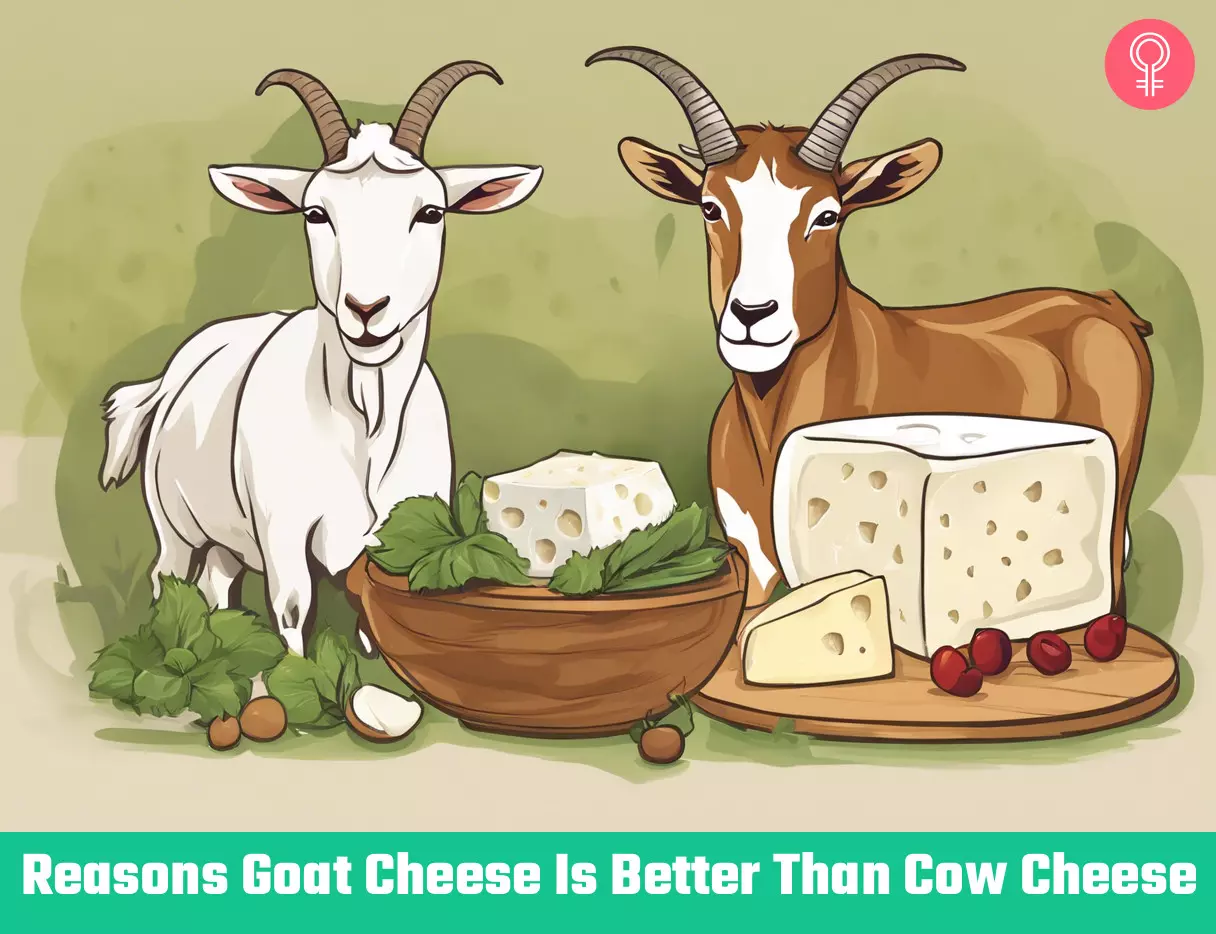Goat cheese is richer in minerals, contains lower sodium levels, has a less-harmful casein variant, and lesser cholesterol and saturated fatty acids than regular cheese. In this article, we explore goat cheese nutrition, its benefits, its potential side effects, how to make it, and some of its easiest and most delicious recipes to try at home. However, is goat cheese good for you? Keep reading to find out!
What Is Goat Cheese?
Goat cheese is made from goat milk and is healthier and better than the cheese made from cow milk. What Are Its Benefits? It provides essential minerals and vitamins to the body and may help lower cholesterol levels and reduce the risk of cardiovascular diseases. Who Can Consume It? Goat cheese is a great alternative for those who cannot consume cow cheese. How Often? You can have a small serving of goat cheese every day. Caution Pregnant women should only consume goat cheese made of pasteurized goat milk to avoid health issues like Listeriosis.
Goat milk benefits are quite well-known and one of its key benefits is that it’s easy to digest. As a result, the cheese made from goat milk is easy on your gut. It has lesser lactose, lower sodium, smaller and easy to digest fats, and similar if not higher vitamins and minerals levels as compared to cow cheese. You will get a better picture when you look at the nutrition data later. Like other cheese varieties, goat cheese is available in different types and textures. You have it unripened (fresh) or ripened, and the texture of each is defined as soft, semisoft, firm, or hard (indicating the moisture content). But why should you switch from cow cheese to goat cheese? And while we know that all types of cheese benefit our health, what gives goat cheese an upper hand and makes it a healthier alternative? The answers lie in its nutrition and biochemical composition and the effects it has on your body. Read on to understand what I mean.
Benefits Of Goat Cheese Over Cow Cheese
1. Has Lesser Saturated Fats and Cholesterol
Goat cheese is a low-fat alternative to regular cheese. It has short and medium-sized fatty acid chains, such as caproic acid, caprylic acid, and capric acid, which are easier to digest. Semisoft type goat cheese contains 22 mg of cholesterol per ounce while cheddar cheese has 28 mg. Lower the cholesterol levels, lower the chances of cardiovascular diseases and liver damage. The accumulated cholesterol derivatives are acted upon by the free radicals, causing damage to your vital organs.
2. Has Lower Sodium levels
The recommended sodium intake for average adults is 2300 mg per day, but it is better to limit it to below 1500 mg per day. Excess sodium can lead to fatal conditions like hypertensioni High blood pressure due to elevated force of blood flow hitting the artery walls; blood pressure measures over 140/90. , ischemic attacki Also known as a mini-stroke or a transient ischemic attack, is a brief interruption in the blood flow to the brain that resolves in a matter of minutes but is a warning sign leading up to an ischemic stroke , and renal failurei A kidney disorder where the organ’s waste filtering efficiency is reduced, which can cause swelling or high blood pressure/hypertension. (1). On the other hand, not having enough salt in the diet is also equally dangerous. If you are a cheese lover, you’ll be happy to know that goat cheese has only 118 mg of sodium, whereas, grated parmesan cheese has 511 mg per ounce. It’s time to switch, isn’t it?
3. Contains Less-Harmful Casein Variant
Casein is the most abundant protein in cow and goat milk. It also contributes a significant chunk to the protein content in cheese. The variant of casein in cow cheese is found to trigger type 1 diabetes and insulin resistance. But goat cheese has a different variant of casein (A2 beta-casein), along with higher calcium (251 mg per ounce), which can protect you from diabetes and increase insulin sensitivity (2).
4. Is Rich In Vitamins And Trace Elements
Although it comes from a tiny and humble herbivore, goat cheese contains more minerals and vitamins than cow cheese. It also increases the absorption of these elements from dietary sources (3). Notably, it is rich in vitamins A, K, riboflavin, folate, and niacin, which maintain exoskeleton and bone health and assist in the synthesis of red blood cells (RBCs) and blood clotting.
The trace elements (minerals), such as phosphorus, magnesium, calcium, iron, and copper – all of these ensure the smooth functioning of enzymatic processes and synthesis and activation of these enzymes, hormones, and other cofactors. To get a better idea of the value of fresh (unripened), hard goat cheese, take a look at the nutritional table below: Now that you know what makes this cheese a better choice over cow cheese, I’m sure you are eager to make a batch of it yourself, aren’t you? Here are some simple and tasty recipes for making goat cheese and using it in other recipes as well. So, let’s get to the kitchen!
How To Make Goat Cheese At Home
You can make fresh goat cheese by combining goat’s milk with either vinegar or lemon juice. You can also make it using a starter culture and rennet, whichever is available.
Boiling pot or a cauldron Goat’s milk (whole, unpasteurized): 1 gallon (you can scale up the volume) Lemon juice or vinegar: ¼ cup Fine and clean cheesecloth or kitchen towel
Woah! Now THAT is some burst of fresh flavors! Let’s take a step forward and whip up some delicious dishes for your main course.
Delicious and Simple Recipes Using Goat Cheese
1. Goat Cheese Potato Scoops
Maris Piper potatoes, peeled and chopped: 500 g Small onion, peeled and roughly chopped: 1 Egg, lightly beaten: 1 Soft goat cheese, mashed with a fork: 50 g Plain flour: 60 g Salt and black pepper Vegetable oil, for frying (you can use regular cooking oil too)
After an overdose of potatoes and oil, let’s move on to making something that’s fresh, herby, tasty, and detoxifying.
2. Sweet-n-Salt Goat Cheese And Berry Salad
Torn romaine lettuce or arugula leaves: 3 cups Blueberries: ½ cup Dried cranberries: ¼ cup Sunflower seeds: ¼ cup Walnut pieces: ¼ cup Crumbled goat cheese: ¼ cup Maple syrup: ¼ cup or to taste Grapeseed oil or olive oil: ¼ cup or to taste Salt: to taste
Amber, a blogger, shares her latest food obsession – goat cheese. She mentions that she first tasted goat cheese in high school and has enjoyed it on and off ever since. She shares her two favorite goat cheese dishes, writing, “My favorites right now are egg white and goat cheese omelet for breakfast and a salad for lunch (i).” The versatility of goat cheese as an ingredient is amazing! It is an ideal replacement for all the high-fat, cow cheese varieties in business. However, it may not be good for all. Check out the next section to learn about the potential risks of consuming goat cheese.
Side Effects Of Goat Cheese
Goat cheese seems to be generally safe for most people. However, individuals who are lactose intolerant or allergic to goat milk proteins may experience adverse effects. Lactose intolerance may cause bloating, gas, and diarrhea. Those allergic to the goat milk proteins may experience hives or itching or other severe reactions like difficulty breathing or anaphylaxis. Hence, practice caution. Individuals who could be allergic to goat cheese may instead prefer other variants like cheddar or blue cheeses, which may contain negligible amounts of lactose.
What’s The Verdict?
Can you eat goat cheese during pregnancy? Unless the cheese is made from pasteurized goat milk, pregnant women should not consume cheese and fermented dairy products because unpasteurized milk or milk products can cause Listeriosis. This disease is caused by a bacterium and can be lethal to the mother. And in some cases, it gets passed on to the baby too. Can you freeze goat cheese? How long does it last? Fresh and soft-ripened goat cheese is very perishable. Wrap it loosely in waxed paper and refrigerate it. This way, it can last for 2-3 weeks. Fresh, spreadable goat cheese or logs can last for up to 2-3 months in the freezer if wrapped tightly. When you want to use this frozen goat cheese, thaw it very slowly. Preferably, do it overnight. Use it within 2 months from the date of opening. What jam goes with goat cheese? Spicy fig jam, marmalade, and cranberry sauce or spiced cranberry jam pair well with goat cheese.
Illustration: Reasons Goat Cheese Is Better Than Cow Cheese
Goat cheese is packed with nutrition! Watch this video and learn about its amazing health benefits, like improved digestion, stronger bones, and better heart health.
